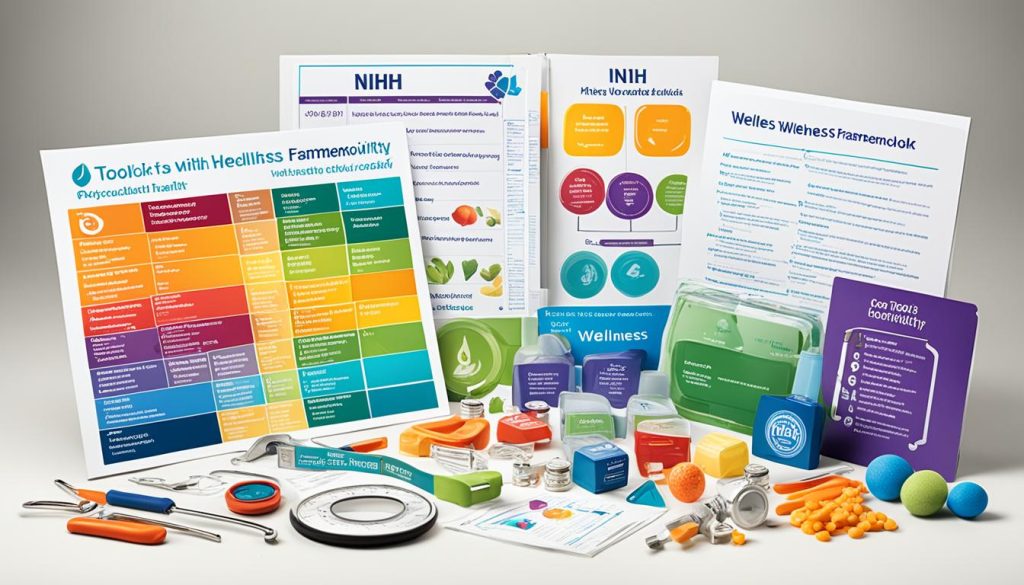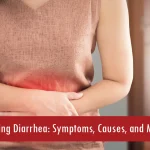Ever thought about true holistic health and well-being? It’s all about looking at physical wellness from many angles. According to the Global Wellness Institute (GWI), wellness is aiming to be healthy in everything we do. Taking good care of our bodies is a big part of this.
Imagine if you could learn the secrets to top health, great exercise, nutrition, and how to avoid disease? This toolkit for physical wellness isn’t simple to make. Yet, NIH is here to help us find the way to full well-being. The big question is, are you ready to begin your journey to unlock your full potential?
Table of Contents
Exploring Dimensions of Wellness
Wellness isn’t just about being physically healthy. It includes many parts like how we connect with others, our feelings, what gives life meaning, and more. Understanding and caring for these parts can make our lives better and help us face tough times.
Social Wellness: Building Healthy Relationships
In social wellness, having close friends and connections is key. Being part of a community, getting involved in activities, and making deep connections are important. These help lower stress, boost our mood, and make us feel like we belong.
Emotional Wellness: Managing Stress and Enhancing Mental Health
Emotional wellness is how we handle our feelings and stress. It’s about dealing with emotions, getting stronger, and keeping a positive mind. This part of wellness helps us feel better overall and less at risk for mental problems.
Spiritual Wellness: Finding Inner Peace and Purpose
Finding meaning and peace is at the core of spiritual wellness. This might be found in religion, meditation, or connecting with something greater. It helps us know who we are, find our place, and lead a more fulfilling life.
Environmental Wellness: Creating a Healthy Living Space
Our environment affects our well-being. It covers things like air quality, being around nature, and how our living and work spaces are designed. A good environment cuts down stress, boosts productivity, and makes us feel better.
Intellectual Wellness: Stimulating Your Mind for Overall Well-being
Keeping our minds active and learning new things is critical for intellectual wellness. This could be reading, problem-solving, or trying new skills. It keeps us sharp, creative, and feeling like we’re still growing.
Occupational Wellness: Balancing Work and Personal Life
Occupational wellness is about balancing work and home life. It means feeling satisfied with your job and having enough time for yourself. Finding this balance helps lower stress and keeps us happy and healthy.
Financial Wellness: Securing Your Financial Future for Better Health
Managing money well is important for financial wellness. It’s about budgeting, saving, and planning for the future. Good financial health means less stress, a better life, and both physical and mental well-being.
Implementing the Physical Wellness Toolkit
To be physically well, it’s important to create healthy habits that stick. This means adding physical activity, balanced nutritious diet, good sleep, and ways to handle stress to your daily life. Doing this leads to lots of great things, like more energy, lower chances of getting sick, and feeling better overall.
Developing Healthy Habits for Long-term Well-being
To stay healthy for a long time, it’s key to have daily habits that boost your physical health. This involves setting up regular exercise, cooking nutritious meals ahead of time, finding ways to relax, and making sure you sleep well. By managing these habits, you can make a big difference in how you feel every day.
Utilizing Physical Activities for Improved Health
Adding different physical activities to your life is vital for being physically well. This can range from exercises that get your heart pumping, like running, to workouts that make you stronger, like lifting weights. These activities help your heart, uplift your mood, and lower your chances of getting health issues.
Exploring the Components of the Physical Wellness Toolkit
The physical wellness toolkit has tools and tips based on science to help you get and keep healthy habits. You might find fitness trackers, meal plans, advice on getting better sleep, and ways to manage stress. By looking at what the toolkit offers, you can get in control of your physical health and how you feel.

| Component | Description |
|---|---|
| Nutrition | A balanced, nutritious diet featuring a variety of whole grains, fruits, vegetables, lean proteins, and healthy fats to support overall wellness. |
| Physical Activity | Physical activities that include both aerobic exercise and strength training to improve cardiovascular health, muscular strength, and endurance. |
| Sleep | Adequate, quality sleep to allow the body to rest, recover, and recharge, which is essential for physical health and well-being. |
| Stress Management | Techniques such as meditation, deep breathing, and mindfulness to help manage and reduce stress, which can impact overall physical health. |
Connecting with the NIH Wellness Resources
The NIH has lots of wellness resources to help you get healthier. It’s a top spot for health and wellness info in the U.S. The NIH makes it easy to find information and tools to lead a healthier life.
Accessing Health Information and Tools
The NIH website is your go-to for health info and tools. It has tips on staying active and eating well. You can also find help for managing health problems.
Thinking about keeping a healthy weight or bettering your heart? The NIH has plenty of resources to give you a hand.
Exploring the Site Menu for Wellness-related Content
When you dive into the NIH’s site menu, you’ll see lots of wellness content. It talks about mental health, friendships, the environment, and money. This shows wellness involves many parts working together.
By checking out the info and resources, you learn to improve your health. You discover how different aspects of wellness connect.
Ways to Connect with NIH for Health and Wellness Updates
The NIH helps you stay in the know about health and wellness. You can sign up for newsletters or follow them on social media. They also have health events and give access to the latest studies.
Connecting with the NIH means you get the latest, most accurate health info. This guide supports your wellness goals.
FAQ
What is physical wellness and why is it important?
The Global Wellness Institute (GWI) says wellness is about making active choices for a healthy life. This includes looking after our bodies through exercise, healthy food, and enough rest. We also work to prevent diseases.
Staying physically well needs to be a regular part of what we do. It means making healthy choices anytime, every day.
What are the different dimensions of wellness?
Wellness is about more than just our bodies. It includes how we connect with others, handle our emotions, and find peace inside. Other aspects also matter, like having a good place to live and work.
Keeping our minds sharp, balancing work and life, and planning for our money are also parts of wellness. Tackling all these areas is key to being well in every way.
How can I develop sustainable healthy habits for physical wellness?
Getting physically well is about setting up habits that stick around. It’s not just about exercise or a healthy diet. It’s also about getting enough sleep and finding ways to deal with stress.
When we make these habits a part of our everyday lives, we feel better and lower our health risks. It’s like having a set of tools that help us live healthier. These tools are proven to work and easy to use.
What wellness resources does the National Institutes of Health (NIH) offer?
The National Institutes of Health (NIH) have a lot of wellness info to help us stay healthy. Their website is full of tips on staying active, eating well, and handling health issues. You can find advice on all wellness areas, like mental health and making friends.
This site is a one-stop place for all things wellness. It’s where you can learn a lot about staying fit and feeling good every day.



